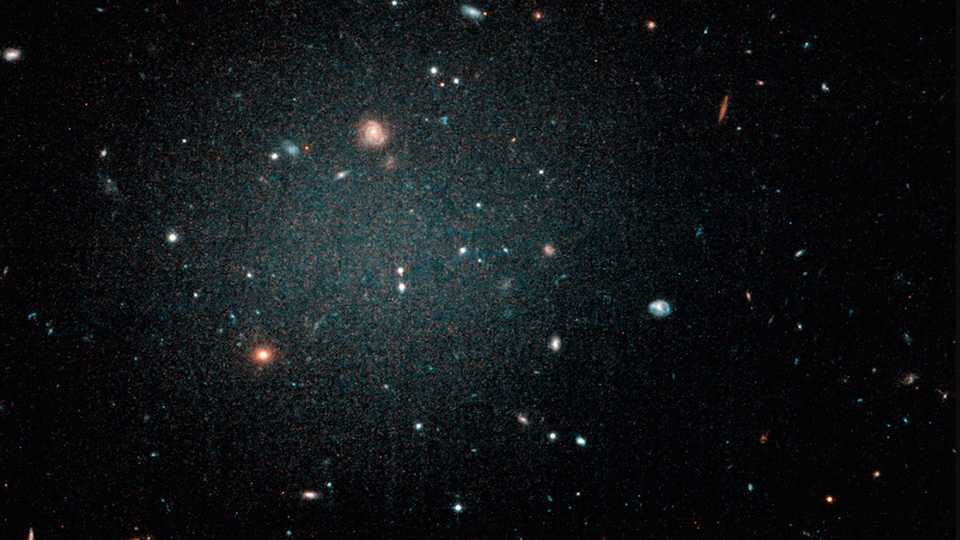Universe Update
A Dark Matter-Less Galaxy

An article in the journal Nature published today described the galaxy NGC1052-DF2: an “Ultra Defuse Galaxy” about 65 million light years away. The galaxy was observed using the Dragonfly Telephoto Array, a telescope array specially crafted to investigate low-brightness targets that are often otherwise overlooked. By tracking the velocities of star clusters within the galaxy, the astronomers were able to determine the total mass responsible for their motion. When the team compared that total mass with the matter estimated to live inside the galaxies’ stars, what’s called the “luminous matter,” they realized it was nearly all accounted for; there was effectively no room in the observations for dark matter within the galaxy, which is incredibly unusual.
In other galaxies, dark matter is far more prevalent than “normal” matter, usually by a factor of 30 times or more. In fact, some galaxies like Dragonfly 44 (also identified by the telephoto array, as the name suggests) are made up almost entirely of dark matter. Dark matter is key for defining the structure of these galaxies; it drives most of the motion for the stars found within them, and it holds galaxies together in larger groups called galaxy clusters. The major problem with dark matter, from an observational perspective, is due to its “dark” nature; we can’t learn about it directly because it doesn’t emit light, so we can only study dark matter through its influence on “normal” luminous matter. Because of this, dark matter’s true nature has remaining steeped in mystery for nearly a century, which leaves some astronomers feeling very unsatisfied.
These disgruntled astronomers argue that, rather than most of the Universe being made of some sort of weird, invisible matter, maybe we just don’t properly understand the way gravity works on large distance scales, and that dark matter is just a figment of that error. These theories can be put broadly under the umbrella of MOND (MOdified Newtonian Dynamics), in which our basic rules of gravity, as laid out by Newton and Einstein, are modified such that everything looks the same on “small” scales like those found within the Solar System, but on larges scales the normal matter has effects we aren’t aware of—to make it look as though dark matter abounds.
These MOND theories can be tweaked to produce predictions that are nearly as good as dark matter models in some instances, but they often struggle in examples such as the Bullet Cluster, where normal matter and dark matter pull apart from one another and can be measured separately. The authors of this letter point out that if MOND were legitimate, there should still be “false dark matter” signatures seen in NGC1052-DF2, which doesn’t seem to be the case. This discovery may act to falsify some of those models and confirm that dark matter, as strange as it seems, really is real.
The formation process for ultra diffuse galaxies is still murky though and many questions remain, so more targets will have to be discovered before we can confirm or deny whether galaxies deficient in dark matter can be proof of dark matter itself.